Smiles Are Just What We Do!
At Little Smiles, we provide high-quality, high-tech pediatric dentistry that revolves around one thing, and that is your child's total comfort.
To us, going to the dentist is more than just having your teeth cleaned or cavities filled, it's about having a great smile. As we like to say, “Smiles are just what we do.”
Our Service Rocks!
Dr. Jennifer Kiening is committed to providing children with the latest, most advanced pediatric dentistry in a warm and caring atmosphere. As a specialist in children's dentistry, Dr. Jenny has enhanced and protected many smiles in our community.
We believe that giving your child a good first impression of dentistry can have a major impact on the way they care for their teeth for. We are committed to helping kids learn how to properly care for their teeth and develop good brushing and flossing habits so they have healthy teeth for years to come. We focus on preventive care to help each child have a healthy smile that will last a lifetime.
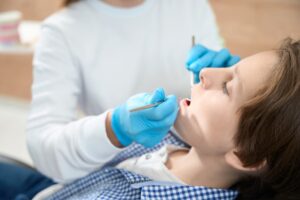
EXAMS & CLEANINGS
Preventing Problems Before They StartThe health of your teeth and mouth is very important to the well-being of your entire body, and while routine brushing and flossing at home is necessary to keep your smile looking its best, visiting us for a comprehensive exam and cleaning is essential. The American Dental Association recommends that you visit the dentist every six months to ensure your teeth stay healthy and your smile stays beautiful. By routinely seeing Dr. Jenny or Dr. Bunch for exams and cleanings, you can:
- Prevent tooth decay, gum disease and bad breath
- Save money by avoiding costly and extensive dental procedures
- Keep your teeth white by reducing staining from food and drinks
- Shorten the time spent in your dentist’s office
- Have a smile that will last a lifetime
The Exam
During your exam, one of our doctors will thoroughly examine your teeth and gums for signs of tooth decay, gum disease, and other health problems. They may also want to take X-rays to see what is happening beneath the surface of your teeth and gums. Whether these X-rays are traditional or digital, the images provided will help to discover dental issues not visible to the naked eye.
Professional Cleanings
Our dental hygienist will begin your cleaning by exploring the surface of your teeth to determine if you have any cavities and to examine the quality of existing fillings. The dental hygienist will then perform a periodontal exam to make sure your gums adhere tightly to your teeth, and no periodontal disease or bone loss may be occurring. Next, they will carefully clean your teeth with a variety of tools to remove any hard mineral buildup(tartar)
from your teeth. Then our hygienist will floss your teeth, use a polishing compound and apply fluoride. Cleanings usually aren’t painful, but if you have any anxiety about your dental exam, be sure to let one of our staff know. They may offer several sedation options to ensure your comfort. If the doctor or our hygienist finds tooth decay or gum disease, they will talk to you about changing your brushing or flossing habits. In severe cases, they may recommend antibiotics or other dental treatments. If your teeth and gums appear to be healthy, they will probably recommend that you continue your brushing and flossing routine as usual.

BRUSHING & FLOSSING
Brushing & Flossing is Essential
Proper brushing and flossing at home is necessary to keep your smile looking its best in between dental visits! While proper brushing and flossing is one of the most important parts of your oral health, it is part of an overall plan that includes visiting your dentist for regular comprehensive exams and periodic cleanings.
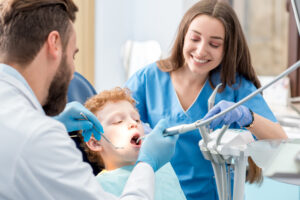
FLOURIDE
Using Fluoride to Protect Your Teeth
You brush your teeth twice a day, floss regularly, and visit Little Smiles every six months, but did you know that rinsing with fluoride, a mineral that helps prevent cavities and tooth decay, also helps keep your teeth healthy and strong? Fluoride is effective in preventing cavities and tooth decay by coating your teeth and preventing plaque from building up and hardening on the tooth’s surface.
Fluoride Comes in Two Varieties: Topical and Systemic
Topical Fluoride is applied directly to the tooth and includes toothpastes and mouth rinses. Systemic Fluorides are generally only used by your dentist and are not often available for at-home use. Systemic Fluoride treatments are generally designed to help protect the oral health of children undergoing dental procedures. Fluoride used in the dentist/orthodontists office is often a much stronger concentration than in toothpaste or mouthwash but is available at some drug stores or a pharmacy(ask the doctor before purchasing professional strength fluoride).
Receiving a Fluoride Treatment From Your Dentist
A fluoride treatment in your dentist’s office takes just a few minutes. After the treatment, patients may be asked not to rinse, eat, or drink for at least 30 minutes in order to allow the teeth to absorb the fluoride. Depending on your oral health or the doctor’s recommendation, you may be required to have a fluoride treatment every three, six, or 12 months. Your doctor may also prescribe an at-home fluoride product such as a mouthwash, gel, or antibacterial rinse.
How to Choose the Right Fluoride Treatment
When choosing your own at-home fluoride product(such as toothpaste or mouthwash), always check for the American Dental Association’s(ADA)seal of acceptance. Products marked with the ADA seal of approval have been carefully examined by the ADA and approved based on safety and effectiveness. Take care of your teeth and smile bright with dental fluoride treatments!
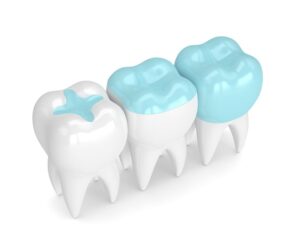
SEALANTS
Sometimes brushing is not enough, especially when it comes to those hard-to-reach spots in your mouth. It is difficult for your toothbrush to get in between the small cracks and grooves on your teeth. If left alone, those tiny areas can develop tooth decay. Sealants give your teeth extra protection against decay and help prevent cavities.
Dental sealants are a plastic resin that bonds and hardens in the deep grooves on your tooth’s surface. When a tooth is sealed, the tiny grooves become smooth and are less likely to harbor plaque. With sealants, brushing your teeth becomes easier and more effective.
Sealants are typically applied to children’s teeth as a preventive measure after the permanent teeth have erupted as a way to prevent tooth decay. However, adults can also receive sealants on healthy teeth. It is more common to seal permanent teeth rather than baby teeth, but every patient has unique needs, and the doctor will recommend sealants on a case-by-case basis.
Sealants typically last from three to five years, although it is fairly common to see adults with sealants still intact from childhood. A dental sealant only provides protection when it is fully intact so if your sealants come off, let your doctor know and schedule an appointment for your teeth to be resealed.
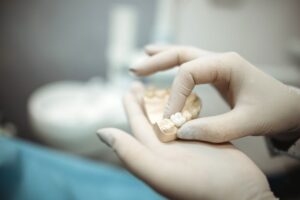
CROWNS
Crowns are a cosmetic restoration used to strengthen a tooth or improve its shape. Crowns are most often used for teeth that are broken, worn, or partially destroyed by tooth decay.
Crowns are “cemented” onto an existing tooth and fully cover the portion of your tooth above the gum line. In effect, the crown becomes your tooth’s new outer surface.
Crowns are needed when there is insufficient tooth strength remaining to hold a filling. Unlike fillings which apply the restorative material directly into your mouth, a crown is fabricated away from your mouth.
Little Smiles offers a stainless steel crown for all posterior teeth as well as a tooth-colored crown with a stainless steel backing for the anterior teeth.

MOUTHGUARDS
Whether you wear braces or not, protecting your smile while playing sports is essential. Injuries to the mouth and jaw are some of the most common injuries received by athletes. Mouthguards help protect your teeth and gums. If you participate in basketball, boxing, hockey, football, gymnastics, lacrosse, martial arts, racquetball, rugby, track and field, skateboarding, skiing and snowboarding, skydiving, soccer, surfing, volleyball, water polo, weightlifting or wrestling, it is recommended by the American Dental Association that you wear a mouthguard.
Types of Mouthguards
Choosing the right mouthguard is important. There are three basic types of mouthguards: the pre-made mouthguard, the“boil-and-bite” fitted mouthguard, and a custom-made mouthguard. When you choose a mouthguard, be sure to pick one that is tear-resistant, well fitted for your mouth and easy to keep clean. Also, make sure it does not prevent you from breathing properly during use. If you wear braces or a retainer, it is imperative for you to wear a mouthguard. Your doctor can show you how to wear a mouthguard properly and how to choose the right mouthguard to protect your smile.
Taking Care of Your Mouthguard
Similar to a retainer, braces, or any other special dental appliance, it is important to take care of your mouthguard by storing it properly and keeping it clean. You should also know when to replace your old mouthguard with a new one. Here are a few simple ways to keep your mouthguard clean and working correctly:
- Gently scrub your mouthguard after each use with a toothbrush and toothpaste.
- Store your mouthguard in a protective case.
- Do not leave your mouthguard in the sun or in hot water; it may melt or become deformed.
- Replace your mouthguard at the beginning of every new sports season. You should also replace your mouthguard if you notice it has become worn and no longer fits properly.
- Do not wear a retainer with your mouthguard. If you wear braces, your doctor will help design a mouthguard to protect your teeth and your braces.
- Do not chew on or cut pieces off of your mouthguard.
- Bring your mouthguard to each dental checkup, and your doctor can check to make sure it’s still in good shape.
- Our goal is to help minimize your chances of a sports-related injury. Be sure to ask your dentist about mouthguards at your next dental checkup – GO TEAM!

SEDATION
There are different types of sedation dentistry, and you and your doctor will work together to decide on a personalized treatment plan that will give your child the care and comfort they need every step of the way. Imagine undergoing a complex dental treatment like a root canal, extraction, or oral surgery. When your child’s treatment is complete, they have no recollection of the time it took, the pain, the noise, or the discomfort they may have been expecting. We are pleased to offer our patients the option of comfortable, safe, and effective sedation dentistry. Patients who benefit from sedation dentistry have:
- A fear or anxiety of being at the dentist
- A hard time sitting still for long periods of time
- A hard time getting(and staying) numb from anesthetics
What is Sedation Dentistry?
Sedation dentistry allows the doctor to provide a variety of dental treatments safely and comfortably for patients who experience anxiety when visiting us.
What Levels of Sedation are Available to My Child?
There is no need to be nervous about having sedation dentistry at our practice. We are licensed by the American Dental Association, and you will find that we are both respectful and professional at all times. Sedation dentistry is closely regulated by law, and there are three sedative states our doctors can administer: mild sedation, moderate sedation, and deep sedation.
Nitrous Oxide Inhalation(LaughingGas)
Nitrous Oxide is a form of mild to moderate sedation that results in relaxation during treatment.
Conscious Sedation
Conscious Sedation is used for patients with moderate dental anxiety and for patients who need longer or more complex procedures. With Conscious Sedation, your child will remain awake throughout the procedure, but will be in a deep state of relaxation. It is recommended that patients receiving Conscious Sedation have a parent or friend accompany them to appointments because it can take several hours for the sedative to wear off.
IV Sedation
IV Sedation is a sedative is administered intravenously, or directly into a vein. The sedation can be quickly modified to your state of consciousness and can be continued as long as necessary for the procedure.
We Understand
We recognize that some of our patients may feel anxious or apprehensive about receiving dental care. Our doctors and staff work hard to make sure that you have a comfortable, positive experience, and that’s why we are pleased to offer“In-office” IV Sedation with a Board Certified Dental Anesthesiologist, Dr. Jarom Heaton. IV sedation is generally used when the treatment is extensive or the child does not do well with conscious sedation or medical necessity.

TEETH WHITENING
There are many products and techniques available for patients who want to achieve a whiter smile, and with so many options available, it can be difficult to choose the method that is right for you. The best way to begin any teeth whitening regimen is to schedule an appointment and talk to one of our doctors about the benefits and process of teeth whitening.
Tray Bleaching
Tray bleaching is a type of professional whitening that uses custom-made trays and whitening gel only available through your dentist. The whitening gel is placed in custom-fitted trays that fit perfectly over your teeth. As the peroxide in the gel breaks down, hydroxy radicals help whiten stained teeth. Unlike strips, this process whitens all your natural teeth and may contain ingredients intended to provide maximum comfort. At home professional tray whitening generally takes 10-14 days, although you may notice results in as little as three to five days.
Whitening Strips
Teeth whitening strips are thin, flexible plastic(polyethylene)strips with a thin film of hydrogen peroxide bleaching on one side. Whitening strip kits come with two types of strips: strips for the upper teeth and strips for the lower teeth. The bleaching agent is applied by placing the strips across your teeth and gently pressing the strips into place to ensure contact with all your teeth. Teeth whitening strips are typically worn for 30 minutes a day, twice a day. The duration of treatment will vary.
Whitening Toothpaste and Mouthwash
The least expensive options are whitening toothpastes and mouthwashes. Designed to have “whitening” capabilities, toothpastes and mouthwashes work to remove surface stains using mild abrasives. However, unlike bleaching materials used in professional whitening procedures, these products do not lighten the actual color shade of the tooth. Whitening toothpastes affect surface stains and will mildly lighten your teeth.

EXTRACTIONS
There are times when it is necessary to remove a tooth. Sometimes a baby tooth has misshapen or long roots that prevent it from falling out as it should, and the tooth must be removed to make way for the permanent tooth to erupt. At other times, a tooth may have so much decay that it puts the surrounding teeth and jaw at risk of decay, so your doctor may recommend removal and replacement with a bridge or implant. Infection, orthodontic correction, or problems with a wisdom tooth can also require removal of a tooth.
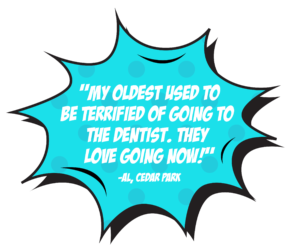
When it is determined that a tooth needs to be removed, your doctor may extract the tooth during a regular checkup or may schedule another visit for this procedure. The root of each tooth is encased within your jawbone in a “tooth socket,” and your tooth is held in that socket by a ligament. In order to extract a tooth, your doctor must expand the socket and separate the tooth from the ligament holding it in place. While this procedure is typically very quick, it is important to share with your doctor any concerns or preferences for sedation.
Once a tooth has been removed, neighboring teeth may shift, causing problems with chewing or with your jaw joint function. To avoid these complications, it may recommend that you replace the extracted tooth.

Enamel Microabrasion
a permanent cosmetic dentistry treatment that removes yellow and brown spots on the tooth are often decalcification stains caused by a buildup of sugar and acids that weaken enamel. This non-invasive treatment only removes micro-layers of enamel to ensure as much protection as possible remains. The whitening effects of enamel microabrasion are effective and long-lasting, and your dentist can determine if you're a candidate for the treatment.
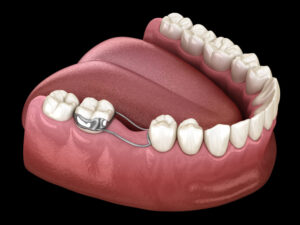
Space Maintainer
A temporary orthodontic appliance used after the loss of a primary tooth prematurely to hold the space for the permanent tooth to grow in its place to prevent space loss.

Frenectomy
If your child is experiencing certain speech, eating, or orthodontic problems, Dr. Jenny may recommend a frenectomy. This procedure removes the connective tissue at either the top or the bottom of the mouth, helping to correct these problems.

Curodont Pain-Free Cavity Treatment for Kids
Curodont is a gentle, non-invasive treatment that helps stop early cavities before they need fillings. It's perfect for children because it strengthens enamel and promotes natural tooth repair—no drills, no discomfort. Keep your child’s smile healthy and cavity-free with this innovative, pain-free option.
Learn More















